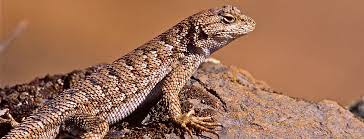Lizards, with their exceptional agility and adaptations to the harsh desert environment, are an alluring target for a variety of creatures seeking sustenance. This article delves into the fascinating world of animals that eat lizards in the desert landscape, shedding light on the strategies and behaviors that make them successful in this challenging environment.
In the arid expanses of the desert, life teems with an intricate web of predator and prey relationships, revealing the ultimate survival of the fittest. One such intriguing facet of this dynamic ecosystem revolves around the predators that have evolved to hunt and consume lizards.
Table of Contents
Overview of Desert Ecosystems and Their Unique Characteristics:
Desert ecosystems, though seemingly barren and harsh, are captivatingly diverse and possess distinctive features essential to their survival. Characterized by arid climates, scant vegetation, and minimal rainfall, deserts present a challenging habitat for flora and fauna. These ecosystems have evolved unique adaptations to cope with extreme temperature fluctuations, scarce water resources, and limited food availability.

The scarcity of water forces many desert organisms to have specialized water-conservation mechanisms, and their behavior and life cycles are intricately tied to sporadic rain events. The complex interplay of these elements has given rise to a distinct array of species, each finely tuned to the delicate balance of desert life. Understanding this environment is crucial in exploring the predatory relationships that exist within it.
Overview of Lizard Species Commonly Found in Desert Regions:
Lizards, a ubiquitous and diverse group of reptiles, are notably abundant in desert habitats. Their evolutionary adaptations have equipped them to thrive in the challenging conditions of arid landscapes. From the iconic Gila monsters and horned lizards to agile geckos and swift-collared lizards, each species has unique features that aid their survival. Lizards are often characterized by their scaly skin, elongated bodies, and a wide range of sizes and colors. Their physiology and behavior are finely attuned to the harsh desert environment, allowing them to regulate their body temperature, minimize water loss, and efficiently forage for food.

List Of Animals That Eat Lizards In The Desert
Predators dwelling in the desert have honed specialized strategies to capture and consume lizards, showcasing the marvel of evolutionary adaptation. Some, like desert foxes and coyotes, utilize their keen senses of sight and smell to track lizards across the arid terrain. Raptors, such as hawks and eagles, employ their aerial prowess to spot and swoop down on unsuspecting prey. Snakes, another formidable predator, rely on stealth and precision to ambush lizards, utilizing their powerful constriction or venom to subdue them.
The mastery of these strategies, developed over generations, illustrates the intricate dance between predator and prey within the harsh desert ecosystem. These behavioral adaptations are a testament to the unrelenting drive for survival in an environment that demands the fittest to endure and thrive.
Gopher Snakes:
Gopher snakes, constrictors found in desert regions, are opportunistic predators that include lizards in their diet. Using their keen sense of smell and strong constriction abilities, they capture lizards, underscoring their role in controlling lizard populations in desert ecosystems.
Bullsnakes:
Bullsnakes, powerful constrictors with a wide-ranging diet, often target lizards in desert areas. Their ability to overpower and constrict lizards showcases their importance in maintaining the ecological balance within the desert habitat.
Kingsnakes:
Kingsnakes, known for their resistance to venom, are effective predators of lizards in desert environments. Their immunity to certain venomous bites allows them to feed on venomous snakes as well, highlighting their vital role in the desert food web.
Foxes:
Foxes, opportunistic omnivores, often include lizards in their diet, especially in desert landscapes. Their hunting skills and adaptability make them significant predators, contributing to the regulation of lizard populations in the arid regions.
Coyotes:
Coyotes, versatile predators with diverse dietary habits, play a role in controlling lizard populations in desert ecosystems. Their keen senses and opportunistic nature allow them to hunt lizards, balancing the delicate ecological interactions within the desert.
Bobcats:
Bobcats, skilled and stealthy hunters, are known to consume lizards in desert regions. Their ability to stalk and capture prey demonstrates their importance in regulating lizard populations and maintaining a healthy ecosystem.
Ferrets:
Ferrets, agile and carnivorous, occasionally prey on lizards in desert habitats. While not their primary food source, their hunting behavior helps in controlling lizard numbers, showcasing their role in the ecosystem.
Badgers:
Badgers, tenacious and powerful predators, may consume lizards as part of their diet in desert ecosystems. Their digging abilities and fierce hunting behavior contribute to the natural balance of lizard populations in the arid environment.
Nile Monitor (in some desert regions):
The Nile monitor, a formidable reptile predator, is known to feed on lizards in certain desert regions. Its semi-aquatic nature and efficient hunting skills make it a notable participant in the desert ecosystem, influencing lizard population dynamics.
Other Lizards:
Intraguild predation, where larger lizards feed on smaller or juvenile lizards, is a common phenomenon in desert habitats. Various lizard species participate in this natural process, highlighting the complex predator-prey interactions within the arid ecosystem.
Conservation Implications:
Understanding the delicate predator-prey dynamics in desert ecosystems holds substantial implications for conservation efforts. Human-induced changes, such as habitat destruction and climate change, can disrupt these intricate relationships. Over-hunting or habitat loss can destabilize predator populations, leading to an overabundance of certain prey species, which in turn can upset the delicate balance of the ecosystem.
Conservation initiatives must take into account not only the protection of individual species but also the preservation of their ecosystems and the relationships that sustain them. Educating and engaging communities about the importance of preserving these ecosystems can encourage responsible stewardship and sustainable practices to ensure the survival of both predators and their prey in these unique environments.
Final Words:
The desert, with its harsh conditions and enigmatic inhabitants, unveils a captivating narrative of survival and adaptation. Lizards, a crucial component of this narrative, play a significant role as both prey and predator. The predators that hunt lizards have evolved over millennia, showcasing a remarkable array of strategies that reflect the complexity of the desert ecosystem.
As we delve into this world of survival and symbiosis, we gain not only a deeper understanding of the desert’s intricate web of life but also an appreciation for the resilient creatures that call it home. Preserving these relationships and the fragile balance of this unique habitat is not just a conservation imperative but a testament to the awe-inspiring beauty and adaptability of life in the desert.
Reference:
- https://www.dockeryfarms.org/which-animals-eat-lizards/
- https://reptileslife.com/what-do-desert-lizards-eat/
- https://www.nps.gov/sagu/learn/nature/lizards.htm

Zahra Makda
Growing up enjoying the beauty of my village, a good passion for nature developed in me from childhood. Following my passion for the natural world, I have chosen zoology for my graduation, during my undergraduate degree, I participated in many nature trails, bird watching, rescues, training for wildlife conservation, workshop, and seminars on biodiversity. I have a keen interest in invertebrate biology, herpetology, and ornithology. Primary interests include studies on taxonomy, ecology, habitat and behavior.









